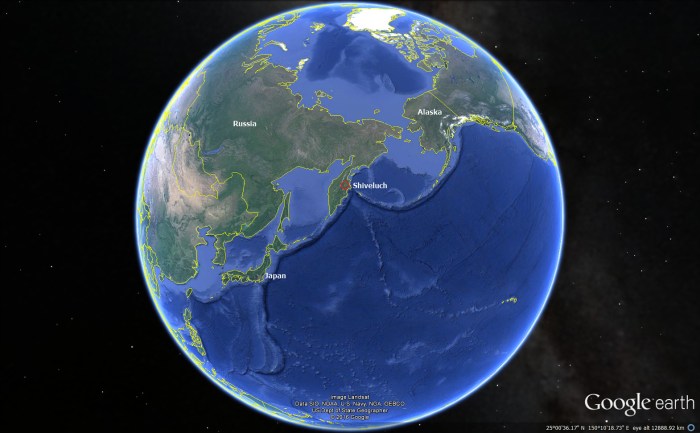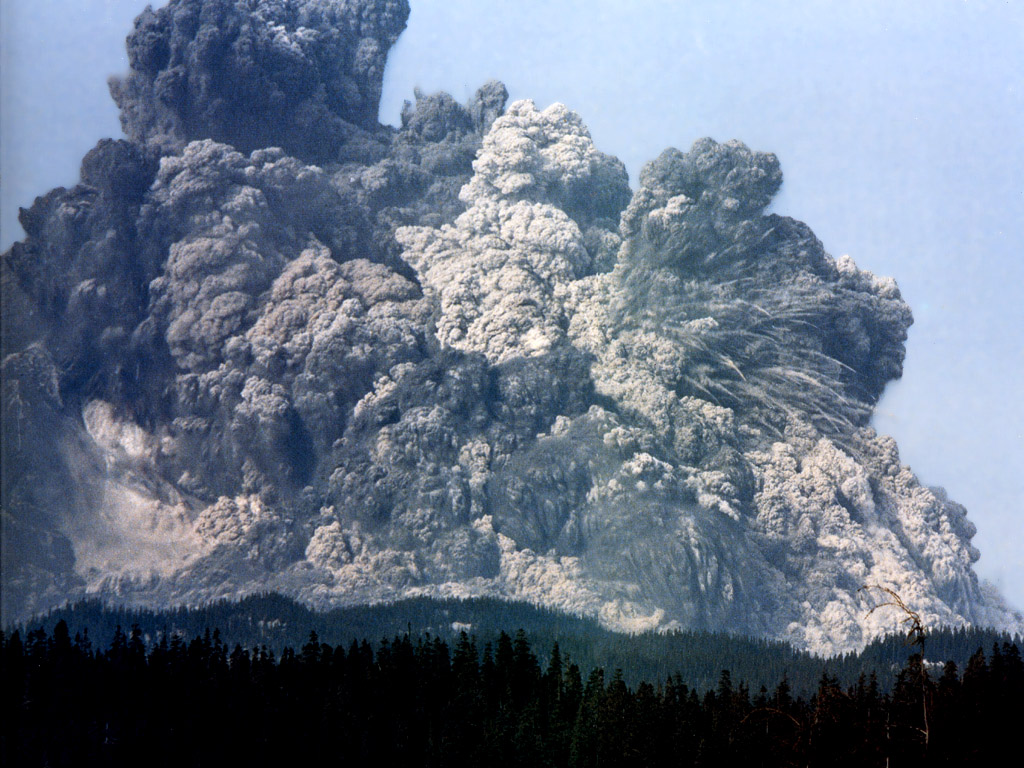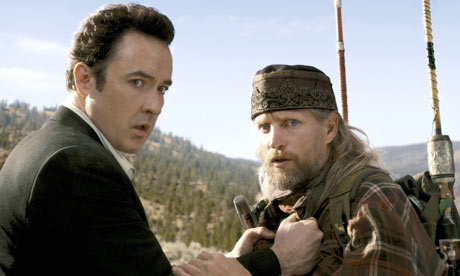
Fuego erupting as view from Acatenango – Credit : Hugo Velasquez Via https://www.facebook.com/Perhaps-you-need-a-little-Guatemala-147138845390667
Welcome the #7 of our weekly eruptions report. This week appears to have been a fairly quiet one according to the VAAC reports with fewer eruptions reported than previous weeks.

Map showing the areas of operation of the various VAAC bodies.
Continuing the recent trend, London, Toulouse, Anchorage, Montreal and Wellington all have no reports in their respective VAAC areas of operation.
Colima

The trend from last week continues with occasional ash plumes and discreet emissions sent up to 18000 feet. Just as I was finishing my notes for the week bemoaning the lack of images of any note, this happened :
Fuego

Fuego appears to also be continuing its trend from last week, with only one notable event listed on the Washington VAAC data, which was an emission detected by satellite sent up to 14000 feet on the 15th.
Popocatepetl

Rejoining the report after a quiet period is El Popo. Light Ash was reported starting on the 11th and appearing to increase in activity with plumes reaching 22000 feet on the 13th before going quiet again. One other note, the VAAC report from the 12th reported “VA OBS in webcam cascading down the flanks of the summit”.
Reventador

This week we have two reports of activity from Reventador. On the 15th a MWO pilot reported ash from the volcano up to 21000 feet and further reports on the 16th of ash to 18000 feet.
Ruiz

Just the one report from Washington VAAC regarding activity at Ruiz. Ash was reported at 24000 feet, but it doesn’t say where this report came from as the ash was not visible from satellite images or on the webcams.
Tungurahua

The big volcano of the past few weeks has appeared to reduce in it’s activity causing the scientist who writes the VAAC report to comment the activity has “markedly decrease from past several days” and this shows in the VAAC reports. Bursts of activity were reported on the 11th, 13th and 15th with plumes sent up to 23000 feet, a hotspot was also visible on the IR views of the volcano.
I am not sure when this image was taken, but i just had to include it.
https://twitter.com/zoonieorg/status/708457766508216320
Dukono

Dukono shows no sign of change in its pattern of recent weeks. A continuous plume is emitting from the volcano up to 8000 feet every day over recent times.
I discovered this video on the LaCultureVolcan blog and the article (in french) goes on to explain a bit more on the current eruptive state of Dukono.
Sinabung

Sinabung is another Indonesian the appears to have no inclination in slowing down with daily reports of eruptions of ash sent up to 12-16000 feet.
Alaid

Heading into the Tokyo VAAC area of interest, we find that Alaid in the Kuril Islands has reports of two “possible eruptions” on the 11th and 12th of March. Both of these were reported via satellite and sent plumes to around 9000 feet.
Sakurijima

Only one report this week from Sakurajima with an eruption reported on the 11th that reached 9000 feet.
Sheveluch

Satellite data suggests that from the 11th-14th of March, Sheveluch sent ash into the air on most days at least once, with data suggesting that it was particularly restless on the 11th when it sent a plume to 18000 feet, and the 12th when it appears that ash was persistently erupted all day.
Copahue

Copahue continues it’s pattern of light ash and steam emissions throughout the past week with daily reports of light ash up to 12000 feet.
Lascar

Finally, we come to our only new addition this week. Lascar Volcano in Chile had a pilot report of ash and the webcam showed a gas/steam emission from the summit. No further information was available at the time of writing.
So there we have it, as I said a much shorter report with few erupting volcanoes (as reported by the VAACs) and even those that have been eruption seem to have taking pause this week.
/Hobbes


this is a bit off topic, but it’s friday and this is for the basket weaving trackers of ash particles to emulate
http://www.thisiscolossal.com/2016/03/nathalie-miebach-weather-sculptures/
Another off-topic (almost)…
Does anyone know if an accurate representation of what the aftermath of a ignimbrite VEI-7 or 8 eruption looks like, immediate post-bang? Specifically, what the caldera looks like.
Is it, I don’t know, like a lava pit, only the size of Rhode Island? Or is it just a whole filled with ash and pumice that, I can imagine, is like the quickest quick-sand possible? I hope it isn’t the latter, but, wouldn’t that be something to see – from space – on a different planet than Earth.
(I made the mistake of reading the first book of Harry Turtledove’s “Supervolcano” series. He describes the eruption rather graphically, but then just pivots to the aftereffects of the bang, focusing on the protagonist family strewn throughout the US – exactly what no one wanted to read.)
But back to my original question, anyone know of a good representation of it online somewhere?
You do not get a gargantuan pit of lava…
Instead you get a large area of boulders and debris that quickly weld together forming the caldera floor.
Nearest equivalent since the invention of photography might be the first pictures taken of the ‘Valley of 10,000 Smokes’ in Alaska; four years at least after the ignimbrite flow, but still impressive
Love the pic, MD. Would have loved to have been there taking it.
With the risk of sounding “random”,would it not be filled with the material that is to heavy to be ejected any distance from the vent?Collapse of a very heavy eruption column back into the vent?Does it in a sense choke itself?
☺
That is what you find, blocked up parts of what was on top of the caldera as it falls down. Large bolders and debris that welds together due to the heat.
So, the entire caldera floor is not a part of the eruption when talking about high end VEI 7 or VEI 8’s? Does the eruption occur around the caldera rim, like a ring, and the floor just drops when the magma chamber empties? If so, I am just a little disappointed. Just a little. I was imagining a doorway to Hell ~100km2 wide (in the case of Toba or Yellowstone.)
The reading I have done on Taupo indicate that the caldera opened in a series of trap door failures. Of note, the same paper indicated that the eruptive material showed little to no zonation, pointing to a homogeneous mix in the chemistry during the eruption. The chemical/mineral make-up is dictated by the pressure and heat that the material was generated from. This hints at a well mixed chamber.
It’s a bit of a reach, but it might also be indicative of one that went active quite fast… which would entail a vigorous mixing process to re mobilize a fairly sizable mass of crystal mush pretty quickly.
Thinking about that possibility sort of creeps me out. Other New Zealand systems have gone from quiet to full on in a short amount of time, so that be would sort of “in character” for the region.
New Zealand is quite mild mannered in temp of year to year activity compared with Iceland,Japan Central/South America and Indonesia.It seems to tend to going big infrequently(and probably quite suddenly ,with lower level activity in between these events from the likes of Ruapehu,White Island etc.Another place in the world that seems similar is the USA pacific NW and maybe the Phillipines?
The Pacific northwest is just way less active than other major volcanic arcs. It has quite a few smaller eruptions. Additionally, there are a lot of effusive shield volcanoes in the pacific northwest. It doesn’t really tend to “go big” relative to the Taupo area ever. Crater Lake’s eruption may be the only VEI-7 eruption to have ever occurred in the Cascades (although there may be some ancient eruptions that are not as well known).
“The Pacific northwest is just way less active than other major volcanic arcs. It has quite a few smaller eruptions.”

When was the last small eruption?,this one?
This area could be the next caldera forming event perhaps?
Just because the most recent eruption was large doesn’t mean this is a more active volcanic arc.
Also, nobody ever said the next caldera event couldn’t be from the cascades. The next caldera event could be from virtually any volcanic arc in the world, that’s like predicting it’s may rain somewhere in the world tomorrow. But if you look across the past 100,000 years or so, the Cascades have been much less active than many other volcanic arcs around the world.
Glacier Peak is known to be rather explosive when it goes – it is just isolated, sits on a ridge, and not much in relief, so it tends to be overlooked. From the Space Needle, it is just another (albeit, snowy) tooth on the eastern horizon. I would argue that since it sits on that ridge, it is able to produce and retain a lot more evolved magmas than the other regional volcanoes, and thus when it goes, it reallllllyyyyy goes. It has been, historically, the most explosive volcano in the Pacific NW – both in terms of VEI and % of explosive vs effusive eruptions.
GL, what happens to the trap door? Does it become the (new) caldera floor? Or does it go with the eruption?
“Choke itself?”
Well, it depends. Column collapse is how you get a pyroclastic flow. What happens in the midst of that fiery environment is anyone’s guess. To effectively “choke” itself, the pressure would have to exceed that of the material trying to come out. Since the pressure was already great enough to fracture through the rock and loft the column… I’m guessing no unless the chamber pressure has dropped low enough to be overcome by the collapsing material.
Novarupta is, in my opinion, a good example of what you get when that happens. In that case, the erupting vent was actually off to one side of the volcano that it came from, afterwards, the top of Katmai collapsed into the chamber after it vented through the valley of Ten Thousand Smokes. When the column collapsed, it formed welded tuff.
Welded Tuff is a sort of natural sintering process. The material is not hot enough to be molten, but it is hot enough to bond to itself nearly instantly.
And some context for the casual reader.
Nice description. Thanks!
Sorry – addressed to GL.
GL Edit: Fixed, and thank you.
Maybe as the more explosive high silica magma is exhausted and more juvenile magma is all that is left to fuel the eruption,the pressure is exhausted and the mass of the eruption cloud collapses into the crater,effectively choking the eruption and instigating a final devastating pyroclastic flow?
In that specific scenario, am inclined to agree.
Taking a bit of a chance to get those pictures from Dukono. Spectacular but not sure it was all that sensible as the crater is clearly in eruption.
Over at ‘Eruptions’ Erik is reporting unrest at Rincon de la Vieja in Costa Rica. Might be one to watch, although The Old Lady’s Corner has fooled everybody before…
Many thanks for another fascinating update. This is such a useful thing to read each week!
When was the last time the Montreal VAAC had an eruption to report ?
Probably never…
That’s what I thought.
Seems like the last eruption in Canada was about 160 years ago, and probablities quoted at 1:200 for any eruption in any given year, 1:220 for an effusive and 1:3330 for explosive. So, yeah, never.
Knowing quite a bit about Canadian volcanism I would say that it is the other way around. An explosive eruption is far more likely than an effusive.
While the video looking down into Dukono was really cool to see, I’d say it was risky. It looked like the hole wasn’t going to be able to handle the pressure much longer. 😮
Just one of the many hazards of Spring Break…
“PANAMA CITY BEACH — A teenager was run over by a Panama City Beach code enforcement truck Monday while the driver was pursuing a runaway dog on the beach, according to Panama City Beach Police Department reports.
The 18-year-old, who did not want to be identified, suffered a broken hand and an abrasion on his knee in the incident, he said.”
“To swerve and protect…”
Wasn’t there an earthquake in Sweden today?
Yes there was. M4,2 just outside the northern part of the Swedish east coast. Too far north for me to feel it, since I live in the Stockholm area. Quakes of this magnitude occur about once every second year somewhere in Sweden. I think it has to do with the land still rising after the last deglaciation.
Isostatic rebound seems to be the correct term.
It was transverse faulting at a well known fault line. This one is out in the ocean. There is another on land that follows the other one. The largest measured earthquake in the region was M5.2.
It is not caused by isostatic rebound, instead it is due to motion of northern Sweden in relation to Finland, the relative movement is (for Sweden) NE.
The faultline on land was the spot where the idjitz wanted to build the deep storage for nuclear waste. The M5.2 knocked sense into them, at least for a while.
Another tidbit, Swedens largest earthquake was M6.2 and happened outside of the west coast at the Weather Islands at a proto-subduction fault.
OT:
We have twin comets heading our way. It’s that time of year when you want to stargaze & it ends up being cloudy. Comets aren’t going to just hang around. 🙂 It’s rained last couple of days. Hope it clears soon. Here’s info from EarthSky.
http://earthsky.org/space/twin-comets-approach-closely-in-march?utm_source=EarthSky+News&utm_campaign=d357efc8e3-EarthSky_News&utm_medium=email&utm_term=0_c643945d79-d357efc8e3-394269541
For the first one, which passes earth tomorrow, you’ll need binoculars and a southern site (the UK is too far north). The second one, a week later, is really only a small piece which came off the other (main) comet and will only be visible with a decent telescope. For those lacking visibility, there will be a live webcast at http://www.virtualtelescope.eu/webtv/ (this site can have annoying pop-ups).
http://www.geotimes.org/apr07/article.html?id=geophen.html
And on the stupervolcano front…
” Can you outrun a supervolcano? New evidence from an ancient eruption suggests the answer is a surprising yes.
“I wouldn’t recommend anyone try to outrun a volcano, but there’s a few of us that could,” said Greg Valentine, a volcanologist at the University at Buffalo in New York.
By analyzing rocks trapped in volcanic ash, Valentine and his colleagues discovered the lethal ash flow spread at street speeds — about 10 to 45 mph (16 to 72 km/h).”
http://www.livescience.com/53954-how-to-outrun-a-supervolcano.html?li_source=LI&li_medium=more-from-livescience
Take that with a grain of salt. It turns out that the heavy slow pyroclastic flow was one plausible end of their model. The other end was a 1,454 mph (2,340 km/h) thinner flow that could still account for the action of the debris moved by the flow.
From the article: ‘”I think it’s plausible but speculative,” said Calvin Miller, a volcanologist at Vanderbilt University in Tennessee who was not involved in the study.’
Non Volcanic tidbit, but geology related, Re: NZ’s Alpine Fault:
“The estimate is much higher than previous estimates based on rocks in the region, which suggested the fault had shifted just 60 percent of that amount in the last 25 million years. It turns out the low estimates ignored the fact that the fault motion switched directions in the recent past. “
http://www.livescience.com/54003-fastest-fault-in-new-zealand.html?li_source=LI&li_medium=more-from-livescience
Old news,I posted both those topics 2 weeks ago,remember John Cusack😃

http://www.volcanocafe.org/volcanoes-of-saudi-arabia/#comment-5596
Interesting continuation of swarm activity in TVZ
http://info.geonet.org.nz/display/quake/2016/03/21/Another+small+earthquake+swarm+south+of+Rotorua
A two part series about Iceland’s largest holocene explosive eruptions and the potential effect on future eruptions at Grimsvötn.
http://www.volcanocafe.org/grimsvotn-the-saksunarvatn-tephras/